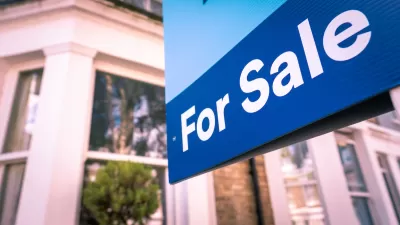Some experts say the metric used to define the housing cost burden is outdated and no longer reflects the reality of household needs.

Writing in Money, Brenden Rearick comments that “when it comes to fair-cost housing, the concept of which homes are "affordable" for low-income families is more muddled than its ever been.” Rearick embarks on an exploration of what ‘affordable housing’ really means and how the term has changed over the decades.
“Half a century ago, the Housing and Urban Development Act of 1969 forced landlords of public housing projects to cap rent at 25% of a tenant’s income. In 1981, the cap was raised to 30%.” However, “The ‘30% rule’ is a relic of a time when Americans made more money relative to their cost of living, and carried less debt overall. In the four-plus decades since the Housing and Urban Development Act was last updated, the cost of housing and consumer goods have vastly outpaced the growth of wages.”
This imbalance, along with the uniqueness of different households’ financial situations, means the 30 percent rule “flattens people’s experiences” and fails to support the families who need assistance most.
One proposed measure that could replace the 30 percent rule is “to factor in "residual income" — or money that's leftover after a resident's basic needs are met.” Experts argue this measure would more accurately reflect household needs. For now, the 30 percent rule dominates how housing assistance is distributed.
FULL STORY: What Does ‘Affordable Housing’ Actually Mean?

Planetizen Federal Action Tracker
A weekly monitor of how Trump’s orders and actions are impacting planners and planning in America.

San Francisco's School District Spent $105M To Build Affordable Housing for Teachers — And That's Just the Beginning
SFUSD joins a growing list of school districts using their land holdings to address housing affordability challenges faced by their own employees.

The Tiny, Adorable $7,000 Car Turning Japan Onto EVs
The single seat Mibot charges from a regular plug as quickly as an iPad, and is about half the price of an average EV.

As Trump Phases Out FEMA, Is It Time to Flee the Floodplains?
With less federal funding available for disaster relief efforts, the need to relocate at-risk communities is more urgent than ever.

With Protected Lanes, 460% More People Commute by Bike
For those needing more ammo, more data proving what we already knew is here.

In More Metros Than You’d Think, Suburbs are Now More Expensive Than the City
If you're moving to the burbs to save on square footage, data shows you should think again.
Urban Design for Planners 1: Software Tools
This six-course series explores essential urban design concepts using open source software and equips planners with the tools they need to participate fully in the urban design process.
Planning for Universal Design
Learn the tools for implementing Universal Design in planning regulations.
Smith Gee Studio
City of Charlotte
City of Camden Redevelopment Agency
City of Astoria
Transportation Research & Education Center (TREC) at Portland State University
US High Speed Rail Association
City of Camden Redevelopment Agency
Municipality of Princeton (NJ)





























